Data, data, data—as marketers, we hear that word thrown around all the time. But data alone can’t improve your results; it’s what you do with that data that matters. Enter data storytelling. Through data storytelling, you can make better decisions, create effective content that connects with the right people, and improve your content marketing operation all around.
Today, we’re diving into the power of data storytelling to show you how your brand can use it to transform your content strategy. So let’s start with the basics.
What Is Data Storytelling?
Contrary to popular belief, data storytelling is not simply data visualization, analytics reporting, or a handful of stats sitting in a PowerPoint somewhere.
Data storytelling is the general term we use to describe the full act of gathering data, extracting insights, and translating those insights into a story. Data storytelling is the blending of two worlds: hard data and human communication. It’s a compelling narrative crafted around and anchored by compelling data, used to guide decision-making, reveal an interesting trend, or provide valuable information to your audience.
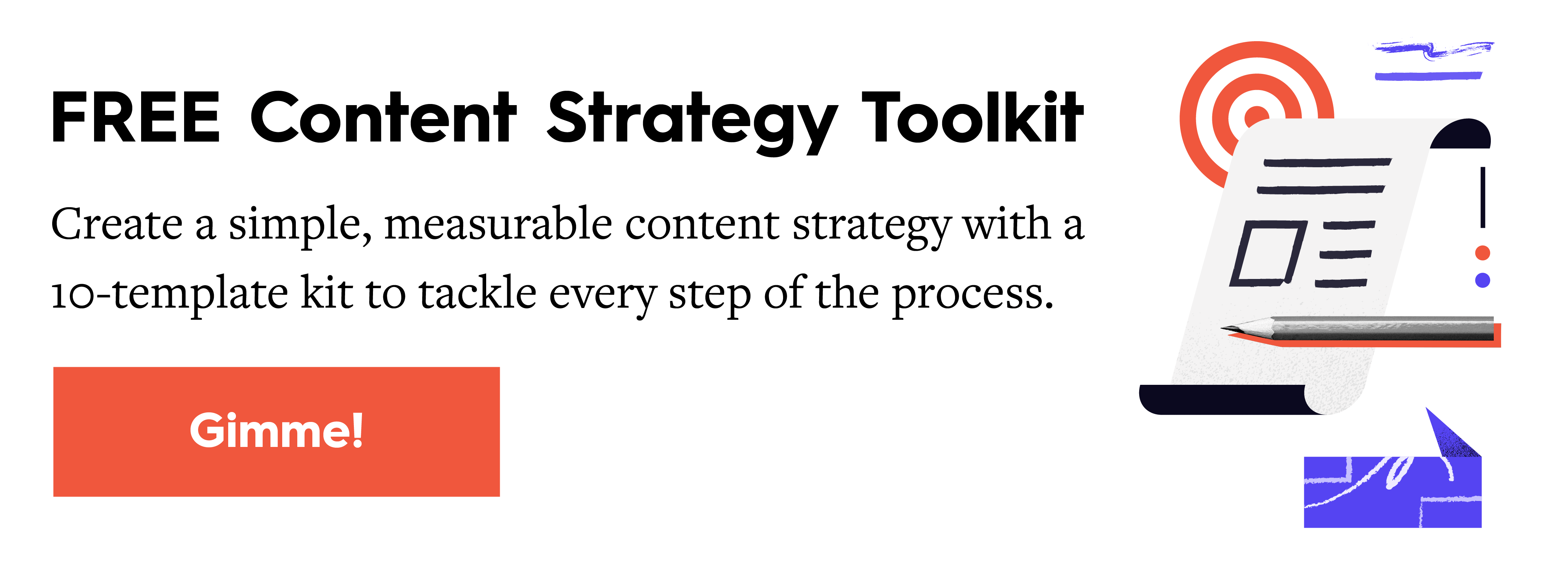
What Does Data Storytelling Require?
Good data storytelling isn’t just slapping together a few charts. It requires several ingredients.
- Good data: The raw data your company collects.
- Synthesis: Identifying the story the data is telling.
- Narrative: Translating those data insights into a clear story.
- Data visualization: Communicating data insights through visualizations that make it easy to “see” the story you’re telling (e.g., the increase in seasonal sales or the percentage of satisfied customers).
To do data storytelling well, you need every piece of the puzzle.
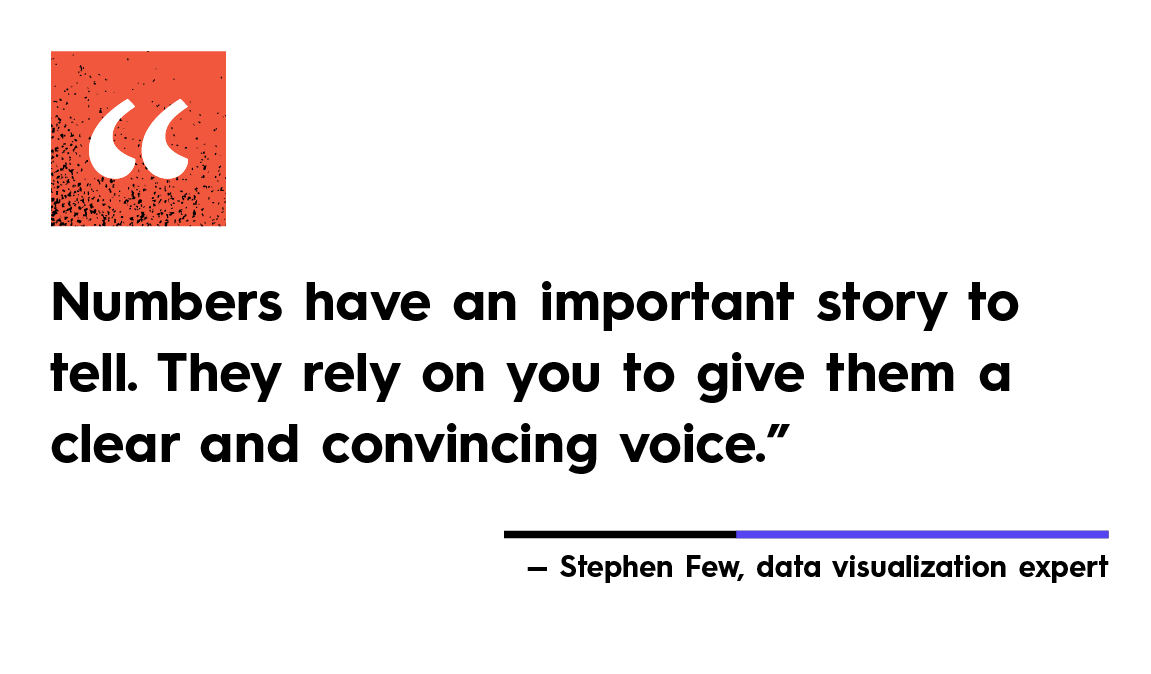
How Do Marketers Use Data Storytelling?
Data storytelling comes in many forms, and it can be used both internally and externally.
- Internal
- Analytics
- Marketing reports
- Research
- Customer surveys
- Presentations
- External
- Annual reports
- Infographics
- E-books
- Whitepapers
- Reports
- Articles
Note: This is not a comprehensive list; these are simply some of the most common applications.
How Does Data Storytelling Help Marketers?
Data storytelling is uniquely positioned (and scientifically supported) to help marketers gain unique insights and communicate more effectively. By incorporating data storytelling into your content strategy, you can create quality content that makes an impact. Here’s how.
1) Data storytelling provides meaning and value.
Technically, all content is interpreted as data by the brain, but the highest-value content provides more than knowledge; it provides insight. This insight helps decision-making and spurns action; therefore, it’s the most meaningful.
In a world where we are besieged by data but desperate for meaning, data storytelling is a powerful tool to connect the dots and provide insight. By assigning meaning and context to data that otherwise lives as numbers in an Excel spreadsheet, we gain—and can share—clarity and understanding.
For brands, this is hugely beneficial. Data storytelling allows you to extract and communicate insight through compelling stories, helping both your marketing operation and the people you’re trying to reach.

For your audience, this is a way to differentiate your content, as people crave useful, valuable content that expands their knowledge, solves their problems, and helps them better navigate the world. By delivering this content through data storytelling, your brand provides a real service to the people you’re trying to reach, positioning you as a trusted resource.
For your brand, data storytelling can guide the way you work and the decisions you make, informing everything from your entire content strategy to your latest campaign to improve your ROI.
Tip: Use these prompts to brainstorm fresh content marketing stories that provide true value.
Example: Incapsula surveyed 300 companies about their SAAS site availability, then turned that research into an animated infographic that offered readers a state-of-the-industry look at the issue. This type of data storytelling is the perfect way to speak to a niche audience and provide a new perspective.

2) It’s PR gold.
To differentiate yourself from the competition, you need unique, original story ideas. Data is an easy way to get these stories. This is especially true for stories based on internal data. When you have proprietary data that no other brand has access to, you can tell a story that no one else can tell about your industry, your customers, and more.
These insights can help you shed light on a previously unexplored topic, introduce an interesting angle, or provide a useful perspective to people and/or industry.
Not only are these stories compelling, publishers are also hungry for great storytelling. In a world of regurgitated content, data storytelling helps you stand out above the noise. A great piece published in a high-profile publication can elevate your brand, expand your reach, and introduce you to an entirely new group of people.
The Data Stories That Brands Should Tell
Tip: If you want to get your content covered, check out our tips to get publishers to fall in love with your content and promote your content like an agency.
Example: LinkedIn has access to the data of 174 million U.S. LinkedIn profiles, over 20,000 companies, and 3 million job postings on the platform, which gives the brand totally unique insight into U.S. workforce trends. Through their monthly Workforce Report, LinkedIn shares interesting data on employment trends that gives job hunters, employers, and the media an intimate understanding of the state of employment in the U.S. By sharing this data, they are providing content that sets them apart and establishes them as the ultimate resource for employment.
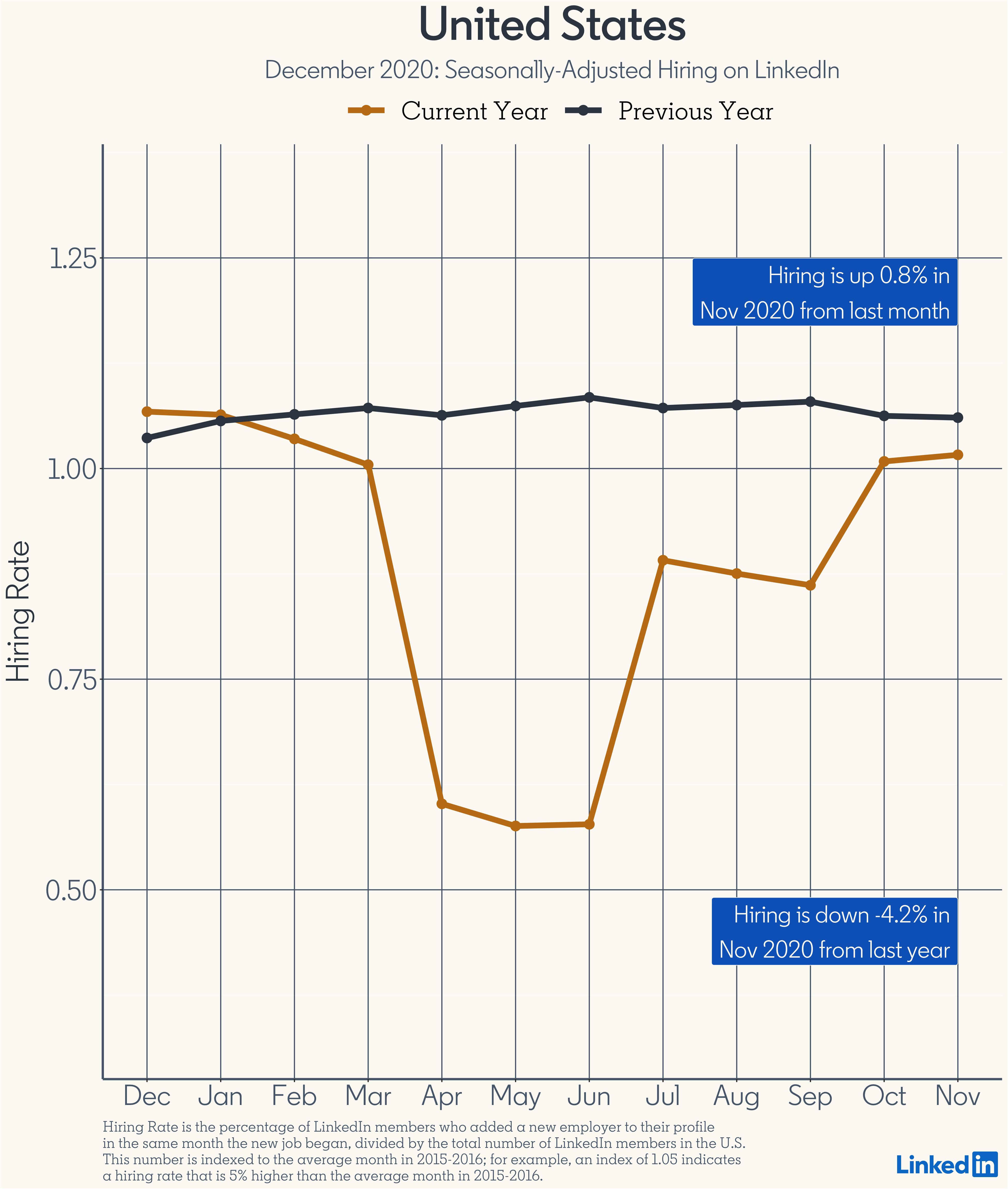
3) It’s credible.
There is a lot of content out there—and a lot of it is bullshit (especially these days). In a world full of conjecture, people want cold, hard numbers that anchor claims to reality. If you can anchor your story to credible data, they are more inclined to trust both your message and your brand.
Tip: Find out how to source good data.
Example: To shed light on the issue of Food Insecurity in America, GOOD magazine created this infographic using data from USDA.gov and the U.S. Census Bureau—two reputable sources.
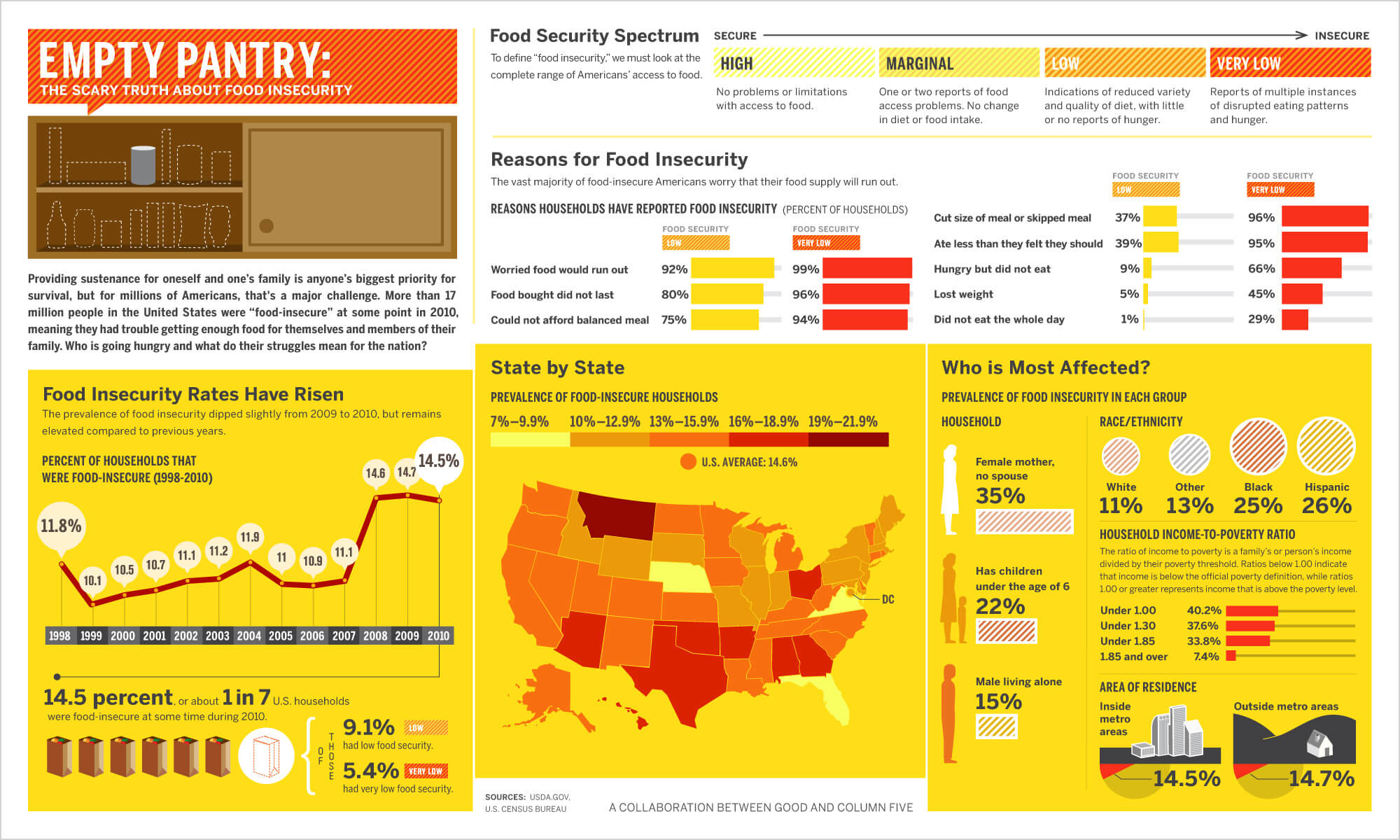
4) It makes your message stick.
By blending storytelling and visualization, you are appealing to both the analytical side of the brain and the emotional experience side, effectively cementing the information in your reader. Data visualization is particularly powerful here because it increases:
- Comprehension: Our brains are hardwired to process visuals faster than language. Being able to “see” the data makes it much easier to understand. Coupled with the language-based context, the data really makes an impact.
- Retention: Information visually processed makes it easier to recall later.
- Appeal: Data visualization is visually stimulating, making the content more attractive to the viewer.
Example: To see how data visualization targets your brain’s processing centers, see this motion graphic.
5) It’s engaging.
In addition to the inherent stimulation that visualization provides, data storytelling also encourages people to engage in the storytelling. There are two types of data storytelling: narrative and explorative. Both foster engagement but allow the viewer to take different approaches. (This is especially relevant for interactive data storytelling.)
Narrative: Viewers are guided through a narrative to arrive at a specific conclusion.
Example: Microsoft’s Anatomy of a Breach interactive infographic guides readers through a data heist to show how prevalent breaches are.

Explorative: Viewers are encouraged to explore the data to draw their own conclusions and focus on the stories most relevant to them.
Example: The 2020 EggTrack Interactive Report is an innovative tool to track company progress toward using 100% cage-free eggs by 2026 or sooner. By synthesizing the data and turning it into a hefty interactive, people can explore the data as they like.
Although explorative storytelling requires more activity than narrative, both forms of data storytelling require people to actively view and synthesize the data.
Tip: Find out why interactive experiences are so great for data storytelling, and find out how to brainstorm good interactive ideas.
6) It’s versatile.
The insights gained from data stories can be communicated in many different formats, including:
- Annual reports
- Articles
- Brochures
- Case studies
- Infographics
- Interactive Infographics
- Microcontent
- Motion graphics
- Presentations
- Reports
- Videos
- White Papers
Even better, these insights can be repurposed, reused, and incorporated into additional content. For example, you might use a compelling data visualization in an article, or use a portion of an infographic in an e-book. This gives you more mileage for every piece of data storytelling you create.
Tip: Find out how a divisible content strategy works, and learn how to repurpose your visualizations.
Where Do You Get Data Stories?
Unfortunately, although data storytelling is an important tool, most companies don’t take full advantage. This is often because teams are siloed. The data reporting/analysis that many companies undertake seldom makes it into marketers’ hands. Even when it does, marketers are oftentimes ill-equipped to work through the data to unearth great stories. This results in a tremendous amount of valuable data unused.
If you haven’t pursued data storytelling before, it all starts with great data. Luckily, there are many ways to get your hands on it.
- Internal: The absolute best, most original stories come from your own data. When you are focused on creating content marketing to build your brand and boost visibility, proprietary data is key. Plus, you already have a wealth of data in your organization, including:
- Analytics
- Customer data
- Reports
- Surveys
- Etc.
- External: The Internet is full of fantastic data from many credible organizations that likely have more resources than you. For content marketing tailored to people’s pain points or interests, these can be valuable sources to build data stories around (or use to support your internal data). Examples of these sources include:
- Government agencies
- Research firms
- Industry organizations/publications
Tip: Check out our roundup of 104 free data sources, find out more about why internal data storytelling is so powerful, and learn how to find stories in your own data.
How to Tell a Great Data Story
Data storytelling may sound intimidating, and for those who come from a decidedly non-mathematical background, it may seem like a foreign language. But marketers can actually be most effective at bringing data stories to life.
Analysts and statisticians have fantastic technical skill, but when it comes to the human element, they often find it difficult to effectively translate all those data points into an interesting story.
Marketers know who they’re trying to reach, so it is easier to translate that data into a language they understand. If you’re diving into data storytelling, here’s how to do it the right way.
1) Source credible data.
Data storytelling builds trust, but only when it’s based on solid data. Data can easily be manipulated, misrepresented, or misinterpreted, so having a solid, non-biased source is incredibly important.
Tip: Read our 5 tips for sourcing your data to follow best practices, and learn about data storytelling basics.
2) Find the story.
You may think your data will tell you one story, but you may be surprised. You may find interesting outliers, an unexpected trend, or a data point that disproves a widely held belief. These can all make for great data storytelling.
Tip: Follow these tips to find the story in your data.
3) Craft an interesting, engaging, and enlightening narrative.
Good data alone does not make a good data story. Data storytelling is only effective when it provides value, whether it teaches people something new, gives them a fresh perspective, or inspires them to take action.
The way you deliver that story determines whether that message is communicated. Your narrative should guide readers through, provide context, and help them synthesize the data story as effectively as possible.
Tip: Find out how to craft an effective narrative and how to choose the right format for your data story.
4) Design data according to best practices.
One of the best ways to sabotage your data storytelling is with incorrect or ill-designed data visualizations. Data visualization is meant to make the data as easy to understand as possible, which is why it’s important to work with a designer who understands best practices.
Tip: If you need a refresher, find out how to design the most common charts and graphs and follow these 25 tips to improve your data design.
Don’t Let Data Storytelling Scare You
The most innovative content marketers will learn to master this medium, but it all starts with experimentation. Data storytelling will only become more prevalent, so it’s in your best interest to become as data-literate as possible, stay up-to-date on content marketing best practices, and learn to become a true storyteller.
To get you on the right track, you might want to:
- Download The Content Marketer’s Guide to Data Storytelling for more tips on bringing your data to life.
- Create marketing personas to make sure your data stories will be relevant.
- Dive deeper into data storytelling with our book Infographics: The Power of Visual Storytelling.
In the meantime, always be on the lookout for your best data stories. And if you need a little outside help with your, find out what to look for in a data storytelling agency and follow these tips to make sure you do great work together. We’d also love to chat through anything if you’re stuck.



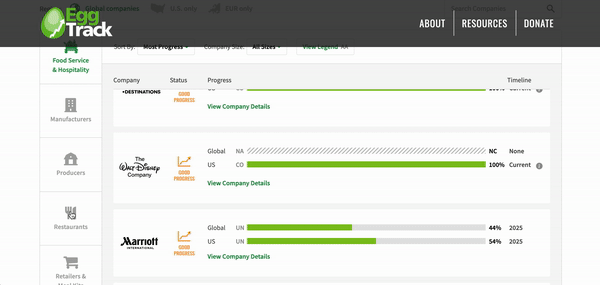

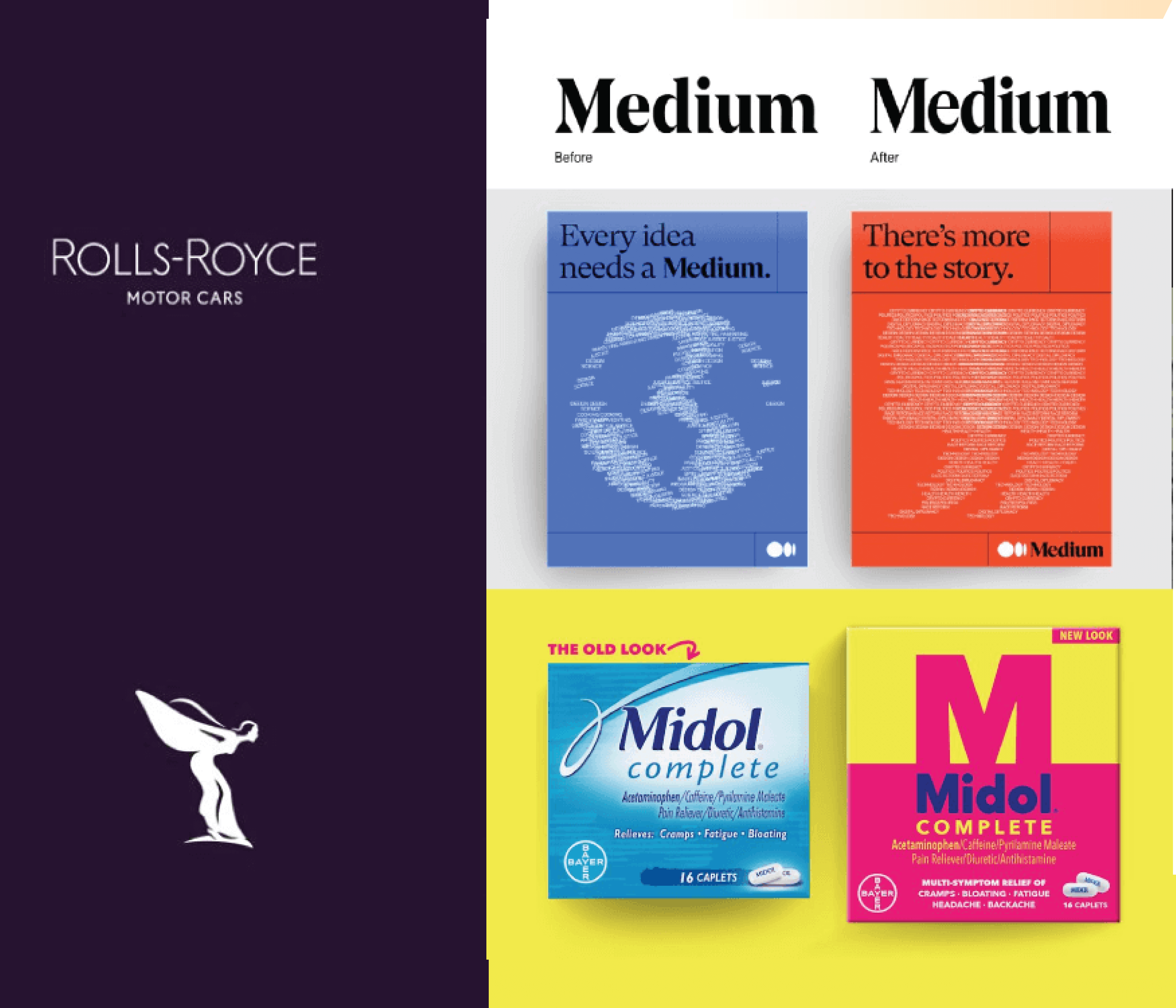
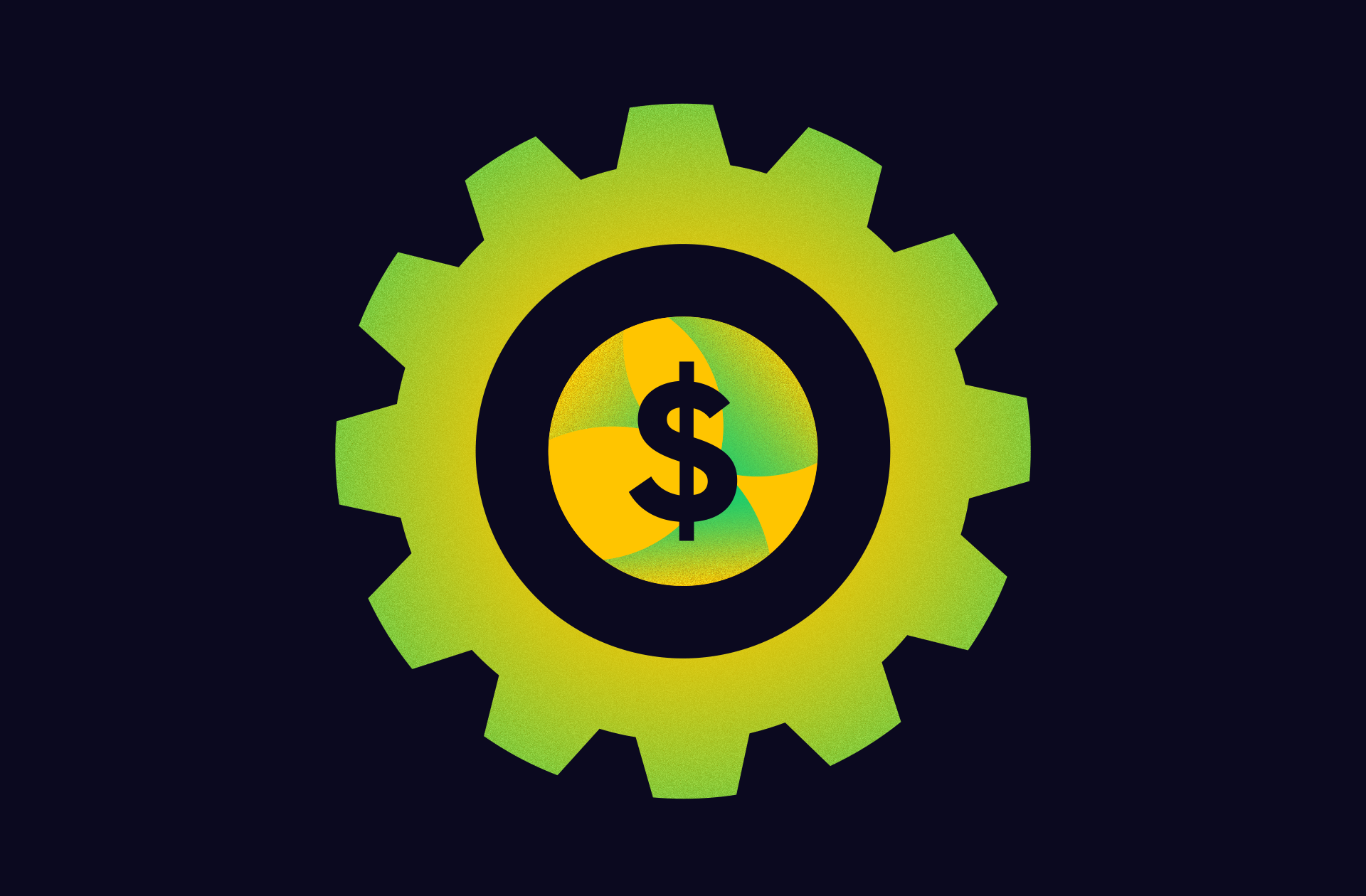

Thank you for all of the information please keep me in your news letters
Thank you.
Will do !
This article is very helpful to me given that my specialty is in engineering and not marketing. The tips helped me develop the right approach in managing our proponents as we market our design to them.
Wow. That’s awesome to hear!
I need to know why story telling and business skills are important supplements to data analysis
Thank you
Hi Anthonia, good question. Ultimately, data is only as good as our ability to interpret it. Finding relevant stories in your data, extracting them, and translating them into a compelling narrative is crucial to communicate effectively, make better decisions, and build your business (and marketing operation) on solid ground. If you want to learn how to tell better data stories, this post may be helpful: https://www.columnfivemedia.com/how-to-find-stories-in-data/